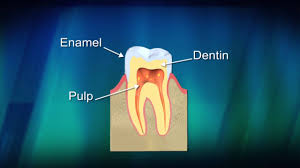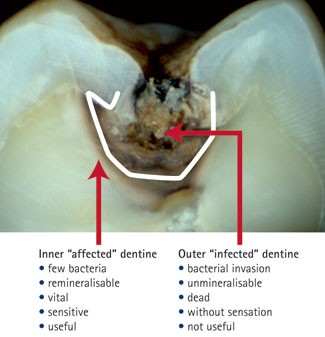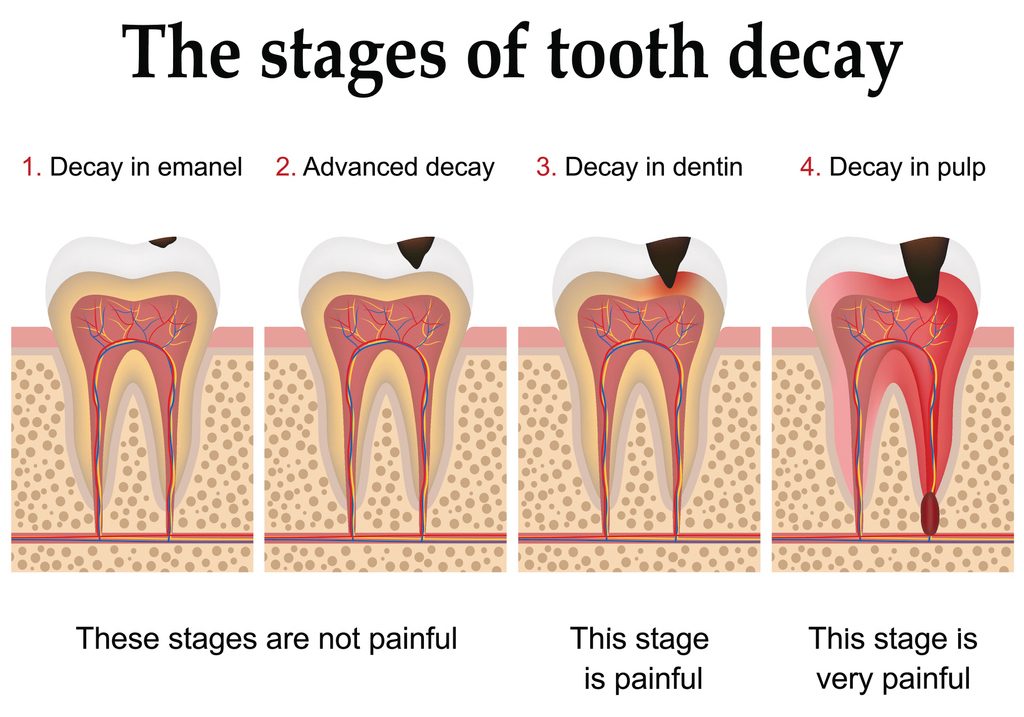Toothache After Filling – Why?
Have you gotten a toothache after a filling? Ever wondered why?

“The tooth wasn’t painful before you did the filling. It’s painful now.” said the anxious patient in a slightly accusatory tone, not without a tinge of anger and distress after having been in pain for a while, which was understandable. I sighed, and proceeded to explain what had likely happened.
What is A Tooth Like?

You may be surprised to know that a tooth is not the same throughout. In simplified terms, a normal tooth has 3 Layers:
Enamel – the outermost layer on the top is non-living tissue.
It is similar to your hair or nails. Can your tooth’s enamel feel pain? NO!
Dentin – the middle layer below the enamel has living cells and can give sensitivity or pain when it is chipped or drilled.
Drilling into dentin is like cutting your nails too short – it can be rather sensitive. Can your tooth’s dentin feel pain? Yes! Or sensitivity.
Pulp – the core of the tooth has fleshy living tissue with living cells and tiny blood vessels.
Drilling into the pulp is like cutting into your flesh. Can your tooth’s pulp feel pain? Yes, definitely!
What is Dental decay?
Dental decay happens when bacterial acids from tooth plaque or trapped food soften the hard tooth material (enamel and dentine) and causes it to soften and break down, which usually forms a tooth cavity.


We Aim To Drill Just The Right Amount of Decay Away

As dentists, we generally aim to remove as much decay as safely as possible.
I personally use a combination drilling technique that most dentists are familiar with.
I use a highly-cutting high-powered dental drill (bur) to remove the bulk of the decay.
I then switch to a less-cutting dental drill to gently remove the decay closer to the pulp / nerve area.
"At this point, I do a check. Is the nerve (pulp) already exposed? Is it visible and very near to the decay?"
If the decay does not visually appear to be near to the nerve, we would normally do the filling. In such cases, it is uncommon to have pulp injury / nerve damage to the tooth and we would likely not routinely warn of future pain.
If the decay appears to be visually close to the nerve (pulp), we may choose to do the following:
1. Fill the tooth if the nerve (tooth pulp) appears to have a reasonable chance of recovery. We may take extra steps such as putting a protective coating (pulp cap) over the area close to the nerve if we feel it is beneficial.
In such cases, we would normally warn you that if the tooth shows symptoms such as toothache or signs of nerve (root-canal) infection, you would need to do root canal treatment OR extract the tooth.
2. Fill the tooth or put a temporary filling if the nerve (tooth pulp) appears to have a poor or no chance of recovery.
In such cases, the pulp tissues may already be diseased or no longer alive. This can be painful or painless.
Root canal treatment or extraction would be necessary to solve the problem of root canal infection.
Can You Just Not Drill Too Deeply?
How much we drill away depends on how much decay there is. We have to remove as much soft mushy decay parts as possible. This is because fillings do not stick well to the moisture in decayed parts, and the soft decay can feed bacteria under the filling if there is an imperfect seal.

Conclusion
1. You can get pain after a dental filling if the nerve (pulp) of the tooth is unhealthy or irritated. This is more common when the decay was originally quite deep.
2. An unhealthy or infected tooth may not show signs of pain initially if the decay was not sealed as there is no pressure build-up. That does not mean there was no infection. When this is obvious, we will not recommend you do a filling without doing root-canal treatment as it usually leads to pain.
3. A healthy tooth with a deep decay can become unhealthy if the bacteria enter the nerve (pulp) area or a crack forms in the tooth. There is no fixed time-frame for this as it varies person to person.
4. If the decay looks deep but there is a chance root-canal treatment is not yet required, we would normally do the filling first (which is less invasive) and inform you that root-canal treatment may be required if the tooth shows signs of pulp / nerve infection.
5. If the tooth is showing worsening signs of infection (which can be checked by x-ray and tests), we would normally advise for root canal treatment or extraction immediately.

